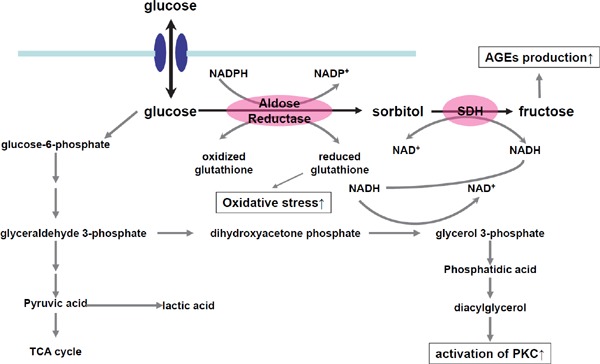Fig. 3.

Role of the polyol pathway in the vascular damage.
The activation of the polyol pathway induces vascular damage for the following reasons: (1) Fructose and its metabolites, e.g., triose phosphate, methylglyoxal, fructose 3-phosphate, and 3-deoxyglucosone, are potent glycating agents. When their production is accelerated, more AGEs are produced. (2) In the polyol pathway where NADPH is converted to NADP and NAD is converted to NADH, the depletion of NADPH decreases the production of reduced glutathione, which accelerates oxidative stress. (3) An increase in NADH levels induces an increase in glycerol-3-phosphate levels, which activates PKC.
Abbreviations: SDH, sorbitol dehydrogenase; AGEs, advanced glycation end-products; PKC, protein kinase C.
